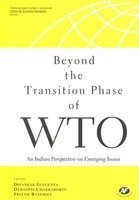Feeding India The Spatial Parameters of Food Grain Policy
- Pages :310
- Price :775
- ISBN :978-81-7304-796-1
- Editor :Manohar-CSH
With the support of numerous maps, this unique volume retells the spatial history of the Indian public food system: initially based on compulsory sales and imports, later graduating to agricultural support prices; from a restricted number of only urban beneficiaries in the beginning, to its spread to rural areas; from an import-dependent State to a self-sufficient cereal producing State. A system that played its part in the success of the Green Revolution by guaranteeing outlets for farmers, which showed the way to an improvement in the calorie intake of the population, but seldom that of the nutritional situation and had significant pernicious effects in terms of its ecological consequences. A system that also contained obvious geopolitical dimensions which made the integration of the four corners of the Indian Union possible within the same structure.
The author argues that, if successive governments did not reduce the PDS’ enormous spatial coverage, it was partly because of a concept of territorial integration and aggregation, developed in equal measure by Hindu nationalism and Nehruvian thought.
This book shall be of immense interest to scholars, students, decision makers and layman readers interested in the history, geography and political economy of food policy and food issues.
Introduction
1. THE CHALLENGE OF FOOD
SELF-SUFFICIENCY IN CEREALS, CONTINUING FOOD INSECURITY
Achievement of national self-sufficiency in cereals
Absence of food security
(a) Ambiguous cereal and calorie intake situations
(b) The Hindu food transition
Box: The Five Conditions for Food Security
HERITAGE OF COLONIAL FAMINES
Laissez-faire, letting them die
The 1943 famine
2. THE HAZARDS OF SPATIAL EQUALITY
TIMES OF HESITATION (1943-1964)
Smoothing curves, filling bellies: theoretical and practical tools
(a) Controls or freedom?
(b) No homogenization without stocks
(c) Domestic procurement or imports?
(d) Territorial integration through redistribution
(e) Spatial segmentation: The mosaic effect
The procrastinations of the food policy
(a) Controls and decontrols (1947-1956)
(b) Imports—a short-term option (1956-65)
CONCENTRATION NOT WELL ACCEPTED (1964-1991)
Hunger justifies the means: the Green Revolution
Precursors to the Green Revolution
Three fundamentals of the green Revolution
• A technical triptych
• An inputs and services distribution policy
• A pricing policy
Spectacular results
• Substantial increase of production and yields
• Achieving national foodgrain self-sufficiency
• Building buffer stocks
The two balance
• An economic balance between producers and consumers
• A spatial balance leading to a food network
Balancing the economic scales
(a) State intervention in the agricultural production market: The FCI
• Procurement price
• Each year, a new food system
• The hazards of short-term planning and the extent of frauds
(b) State intervention in the consumer market: The PDS
• A two-tier system
• The expansion of the system
Balancing space
(a) How could the entire territory be covered?
(b) ‘Cooperative disputes’ between the centre and the states
• An ambiguous balance of power
• When food feeds tension
National integration or regionalist disintegration?
State rivalries
3. ASSESSMENT TIME—THE PERSISTENCE OF INEQUQLITIES, 1991-2007
RECONCILING ECONOMIC LIBERALIZATION WITH STATE CONTROL
MIXED RESULTS
Reappraising procurement
(a) Concentration in time
(b) Concentration in space
(i) Inequalities of the Green Revolution perpetuated by procurement
(ii) The storage issue
(c) Crop concentrations: Preference for wheat and rice to the detriment of the environment
Reappraising the PDS
(a) In time
(b) In space
(c) Badly targeted customers
Few clients are poor
Few of the poor are clients
Few of the poor clients buy a lot
(a) When wheat and rice drive out other crops
(b) The urban bias: A comparison with China
(c) The prevalence of fraud
LIBERALIZATION, WISE CAUTION, OR CONFUSED VACILLATION?
Between a food policy and an agricultural policy
The vicious circle of food subsidies, or how to satisfy exporters alone
The solutions implemented, or how to dispose stocks
(a) Resale in the open market
(b) The rise in distribution in the name of the ‘right to food’
(c) Increasing ‘Food for Work’ and free midday meal schemes
(d) Growing criticism of beneficiary selection
Spatial equality not totally discarded
(a) Railway logistics, above all
(b) Market integration
(c) New powers devolved to the states:
Decentralizing the system
1. Decline of national solidarity in procurement
2. Resorting to alternative systems
3. A typology of the states
What about the future?
4. A NATIONAL TERRITORY TO BE COVERED WITH A GRID
PLANNING THE TERRITORY OF THE NATION
The discourse
(a) Centralized or participative planning?
(b) Spatial concentration or dispersion?
The reality
Gandhi’s revenge? The rebirth of ‘localism’
A FOLIATED TERRITORY AND MULTIFOLD IDENTITY
HINDU NATIONALIST TERRITORY
Failed secularization of the holy land
Hinduism—A geographical religion
The chequering of Hindu territory
FROM DIAMOND-SHAPE TO CROSS
A COMPARISON OF FOOD POLICIES IN SOUTH ASIA
Urban-based distribution systems
Working towards self-sufficiency through procurement
Liberalization
Conclusion








